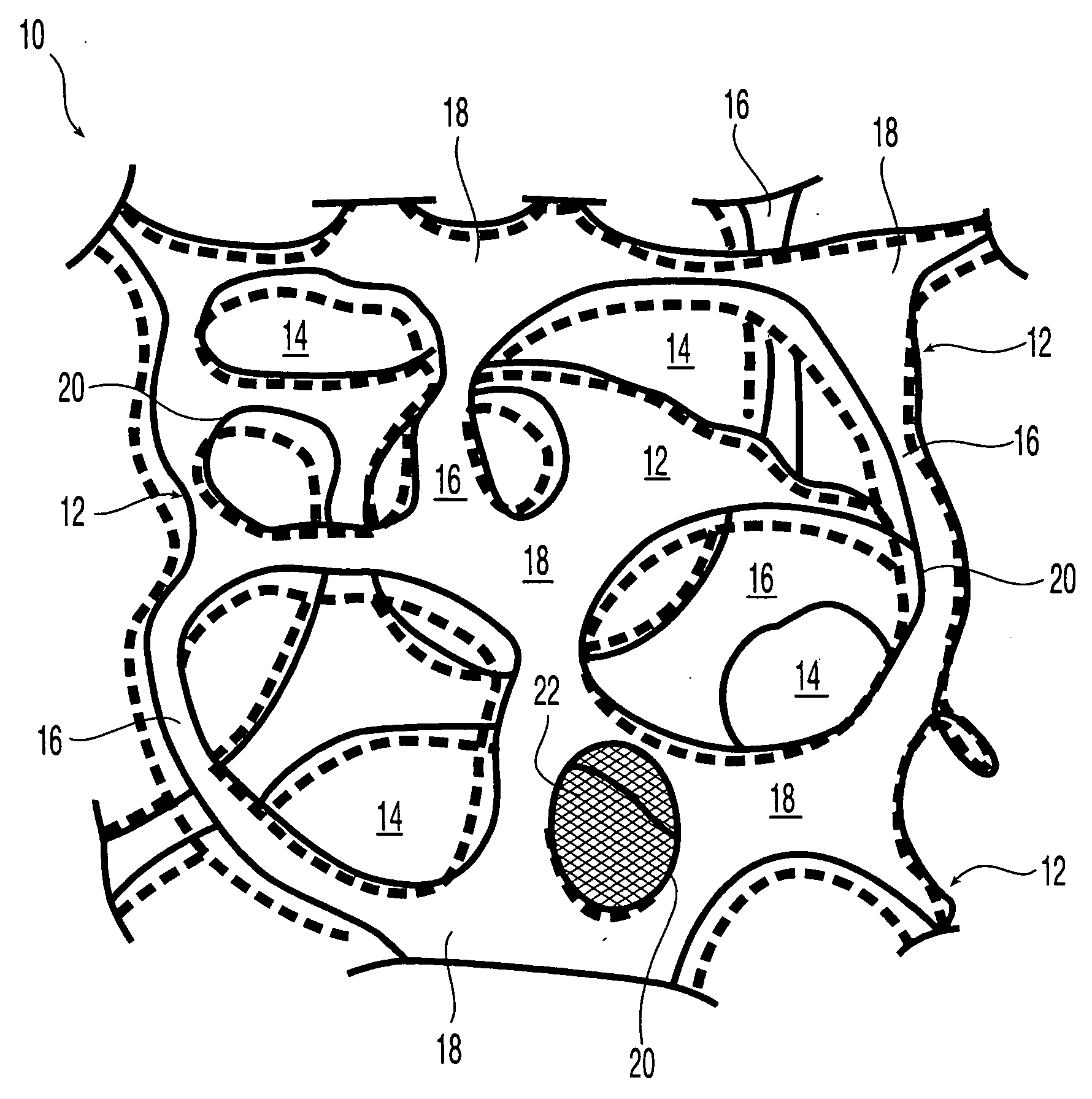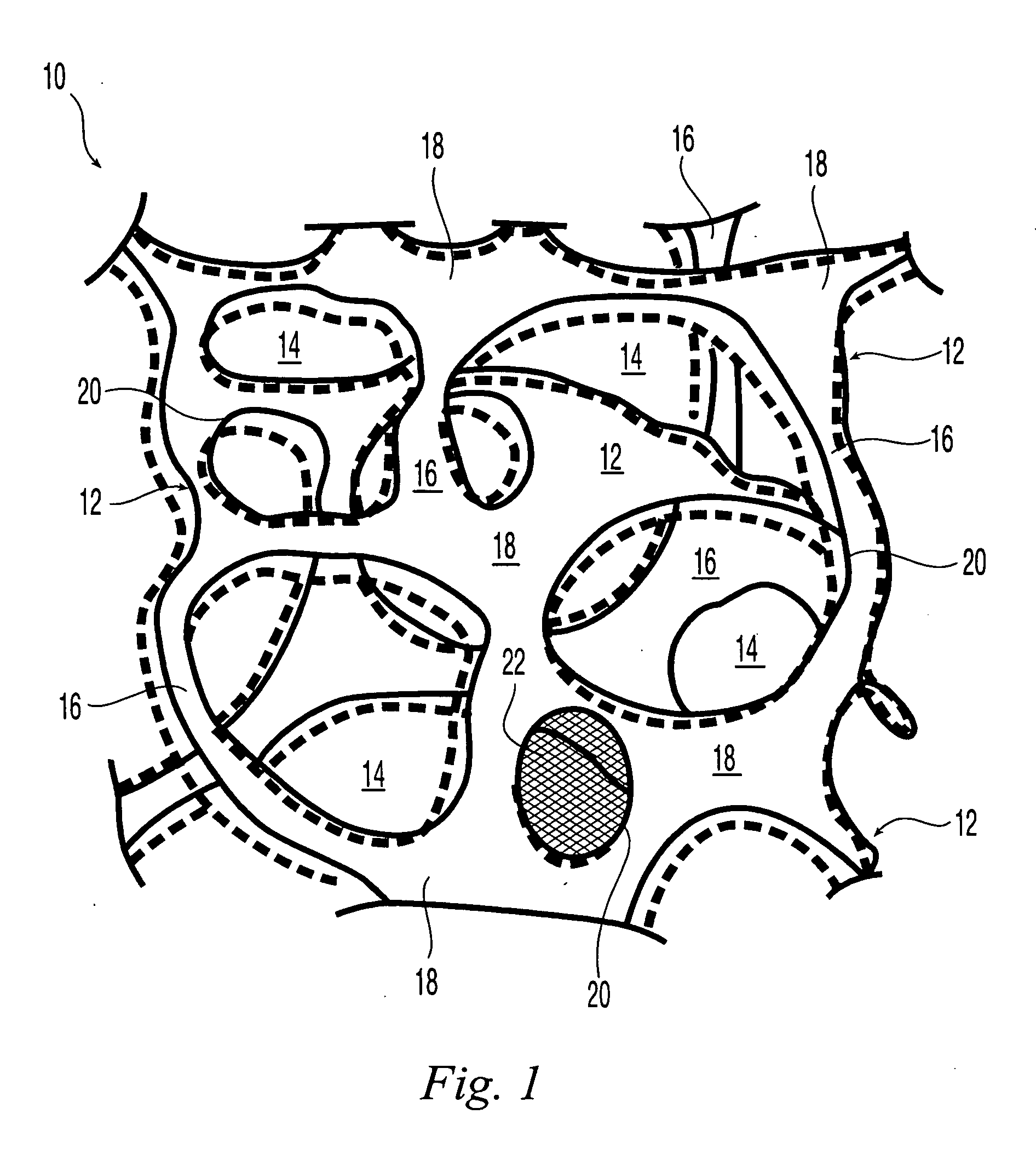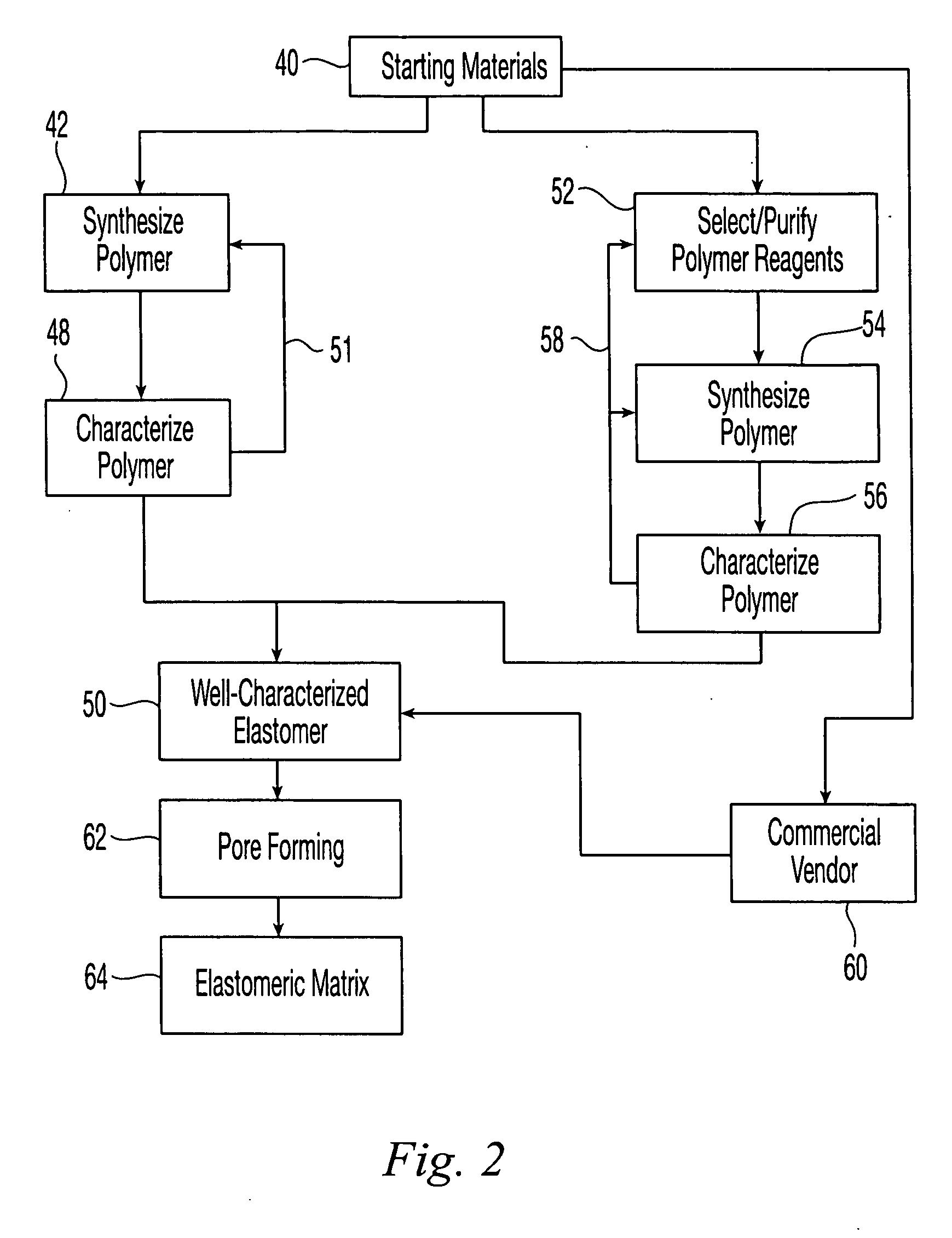Reticulated elastomeric matrices, their manufacture and use in implantable devices
a technology of elastomeric matrices and matrices, which is applied in the field of reticulated elastomeric matrices, can solve the problems of lack of mechanical properties, unattractive known processes, and no known implantable device has been specifically designed or available, and achieves the effects of regaining shape and most of its size, long-term implantation, and sufficient porosity
- Summary
- Abstract
- Description
- Claims
- Application Information
AI Technical Summary
Benefits of technology
Problems solved by technology
Method used
Image
Examples
example 2
Fabrication of a Polycarbonate Polyurethane Matrix by Sacrificial Molding
example 1
is thrice repeated, each time employing smaller particles, i.e., having average sizes of 1.5, 1 and 0.5 mm, respectively. Results comparable to Example 1 are obtained in each case.
Example 3
Fabrication of a Polycarbonate Polyurethane Matrix by Sacrificial Molding Alternative Method
A solution of BIONATE® 80A in THF was made according to Example 1 except that its concentration was 7% by weight of the polycarbonate polyurethane polymer. As also described in Example 1, VYBAR 260 hydrocarbon polymer particles were used except that the particles were screened to a relatively narrow diameter distribution, about 1 mm to about 2 mm in diameter, before use.
As described in Example 1, about 20 mL of the 7% polymer solution was poured onto the top layer of the wax particles. However, in this example, the wax particles in the beaker were neither heated nor compressed before being contacted by the solution. A reduced pressure of about 5 inches of mercury was applied to the buchner flask. As s...
example 4
Fabrication of a Polycarbonate Polyurethane Matrix by Sacrificial Molding Using Co-solvents
Particles of VYBAR 260 branched hydrocarbon polymer, obtained from Baker Petrolite, were melted and extruded at a temperature of from 90° C. to 105° C. through a 0.75 inch (19 mm) diameter spinning nozzle. The extrudate passed into a beaker filled with a mixture of 90 wt. % isopropanol / 10 wt. % water maintained at a temperature of from 15° C. to 30° C. The height of the surface of the mixture was adjusted such that the top of the mixture was 22 inches (560 mm) below the bottom of the nozzle. The solidified beads were collected by passing the bead / mixture slurry through a sieve of mesh size smaller than #25 (710 μm). The sieve containing the beads was placed in a HEPA filtered air stream to dry the beads for at least 4 hours. The dried beads were again sieved. Twice-sieved beads in the range of from 1.7 mm to 4 mm in diameter were used.
Co-solvents were used to form a polycarbonate polyuret...
PUM
| Property | Measurement | Unit |
|---|---|---|
| diameter | aaaaa | aaaaa |
| diameter | aaaaa | aaaaa |
| diameter | aaaaa | aaaaa |
Abstract
Description
Claims
Application Information
 Login to View More
Login to View More - R&D
- Intellectual Property
- Life Sciences
- Materials
- Tech Scout
- Unparalleled Data Quality
- Higher Quality Content
- 60% Fewer Hallucinations
Browse by: Latest US Patents, China's latest patents, Technical Efficacy Thesaurus, Application Domain, Technology Topic, Popular Technical Reports.
© 2025 PatSnap. All rights reserved.Legal|Privacy policy|Modern Slavery Act Transparency Statement|Sitemap|About US| Contact US: help@patsnap.com



